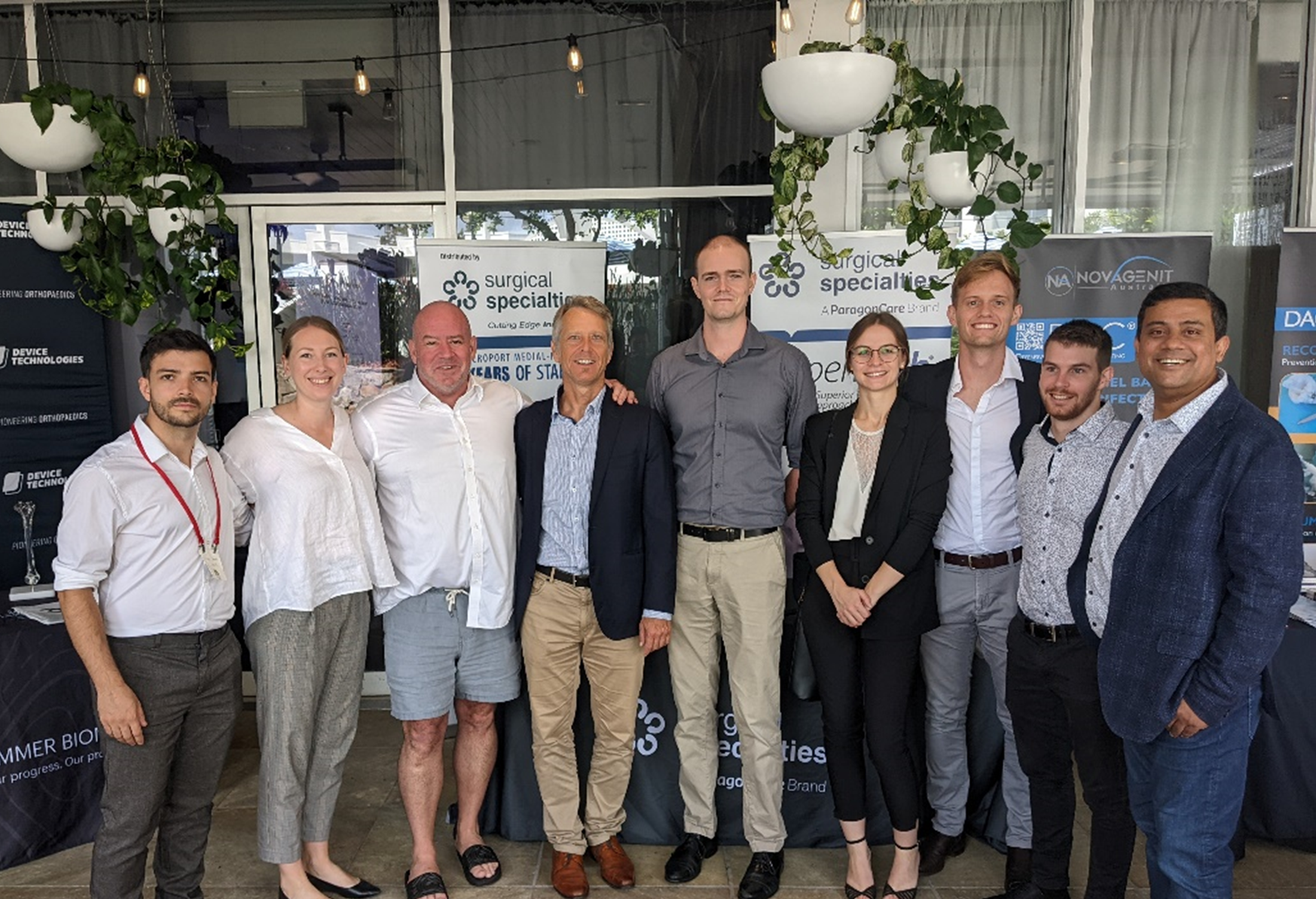Our team presented at the Australian Orthopaedic Association (AOA) QLD Branch and the Queensland Orthopaedic Research Fund (QORF) Combined Meeting held at the Sofitel, Brisbane Central September 8th 2022.
This was the second meeting of the year with the team excited to present their latest developments from the last 6 months since the last AOA QLD-QORF ASM & AGM at Noosa in February earlier this year.
‘Spotlight on Musculoskeletal Research in Queensland’ research groups and individuals were invited to present their latest research including a synopsis of problems encountered and how these were overcome with the centre for Joint Biomechanics at the forefront of research into shoulder 3D modelling and pre-operative planning tools, the use of robotics to assist in orthopaedic surgeries specifically shoulder arthroplasty and rotator cuff repair, and the invention of tissue scaffolds and post-operative monitoring.
One of our goals is to break down barriers and actively promote conversation, collaboration, and ideas between the clinical and academic sectors. It was fantastic to attend and present some of our research projects at this forum.
Prof. Travis Klein joined the newly established QORF Research Committee to represent us together with the Centre for Biomedical Technologies and QUT (Queensland University of Technology).
It was also great to catch up with our industry partners Stryker, Zimmer Biomet ANZ and research collaborators from the Herston Biofabrication Institute: Dr Kevin Tetsworth and Dr Deniz U. Erbulut.
Our team presented the following scientific talks:
- Peter Pivonka – ‘Recent advances in musculoskeletal modelling of the shoulder’
- Affiliate researcher Dr Kristin Italia – ‘All-arthroscopic muscle advancement slide technique to repair massive posterosuperior rotator cuff tears’
- Dr Laith Alzubaidi – Deep learning for Orthopaedics
- Dr Eleonore Bolle – ‘An engineering approach to improve healing outcomes with rotator cuff tears.’
- Prof Saulo Martelli – ‘Time-elapsed micro-CT imaging of the failure mechanism of reverse shoulder replacement’
- Affiliate researcher Mr Luke Gilliland – ‘A 3-Dimensional method to estimate restoration of native joint line preoperatively’
- Mr Ahmed Sewify – ‘use of ultrasound tomography to build dynamic shoulder models’
Thanks to the team from the ARC Training Centre for Joint Biomechanics & QUASR for presenting their projects!

